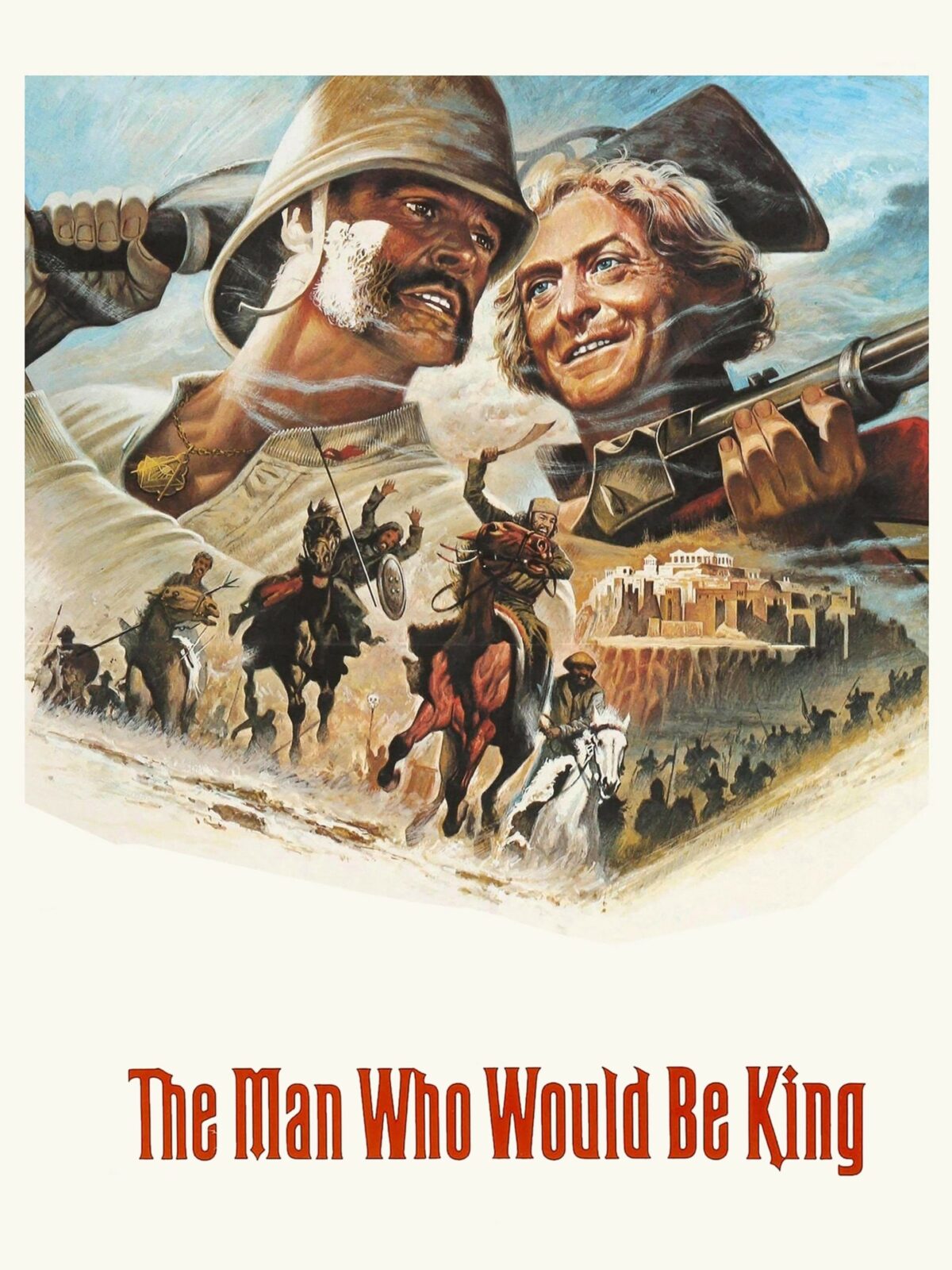Introduction:
In the tapestry of cinematic history, “The Man Who Would Be King” (1975) stands as a shining jewel, a masterpiece that weaves together adventure, action, and imperial intrigue. Directed by John Huston and adapted from the novella by Rudyard Kipling, this epic film takes audiences on a mesmerizing journey to the remote regions of Afghanistan and explores the themes of ambition, friendship, and the consequences of imperialist aspirations. As we delve into the rich narrative and stellar performances, we unravel the layers of this classic adventure that continues to captivate audiences with its timeless allure.
Plot Summary:
“The Man Who Would Be King” unfolds against the backdrop of British India in the late 19th century, as two former soldiers and adventurers, Daniel Dravot (played by Sean Connery) and Peachy Carnehan (played by Michael Caine), embark on an audacious quest. Inspired by the tales of Alexander the Great and fueled by their own aspirations for wealth and glory, the duo sets out to conquer the uncharted territories of Kafiristan.
Their journey takes them through treacherous landscapes and into the heart of a land untouched by the influence of the British Empire. The protagonists, armed with charisma, cunning, and a rudimentary understanding of local customs, manage to establish themselves as god-like figures among the Kafiris. However, as their influence grows, so does the complexity of their roles, leading to a series of events that test the bonds of friendship and the consequences of their imperial ambitions.
Cinematic Brilliance:
- Majestic Cinematography: “The Man Who Would Be King” is a visual feast, with the cinematography by Oswald Morris capturing the grandeur of the Himalayan landscapes and the mystique of Kafiristan. From the breathtaking vistas to the intimate moments of the characters, every frame is meticulously composed, immersing the audience in the exotic and perilous world that Dravot and Carnehan navigate.
- Nuanced Performances: The film is elevated by the nuanced and powerful performances of its lead actors, Sean Connery and Michael Caine. Their on-screen chemistry and portrayal of the complex friendship between Dravot and Carnehan add depth to the narrative. Connery’s charismatic and commanding presence as Dravot and Caine’s portrayal of the more pragmatic Peachy contribute to the film’s emotional resonance.
- Thematic Complexity: At its core, “The Man Who Would Be King” is a tale of imperialist ambitions and the consequences of attempting to impose foreign ideals on indigenous cultures. The film explores themes of cultural clash, the pitfalls of unchecked ambition, and the blurred lines between myth and reality. Kipling’s exploration of these themes, adapted skillfully by John Huston, resonates with a timeless relevance.
- Authentic Cultural Representation: The film is notable for its efforts to authentically represent the diverse cultures portrayed in the narrative. From the costumes to the rituals, the production design ensures a level of cultural accuracy that enhances the immersive experience. This commitment to authenticity contributes to the film’s credibility and impact.
- Enriching Musical Score: The musical score by Maurice Jarre complements the film’s narrative with a rich and evocative soundtrack. The music enhances the emotional beats of the story, underscoring the grandeur of the adventure and the poignant moments of personal revelation. Jarre’s work adds another layer of cinematic brilliance to an already compelling narrative.
Legacy and Impact:
“The Man Who Would Be King” has left an indelible mark on cinematic history, earning acclaim for its storytelling, performances, and visual grandeur. The film’s exploration of imperialist themes, friendship, and the consequences of cultural arrogance has cemented its place as a thought-provoking classic.
The impact of the film extends beyond its initial release, influencing subsequent generations of filmmakers and storytellers. The timeless themes explored in “The Man Who Would Be King” continue to resonate, offering a lens through which audiences can reflect on the complexities of cultural interactions, ambition, and the pursuit of mythical aspirations.
Conclusion:
As we journey through the peaks and valleys of “The Man Who Would Be King” (1975), we find ourselves immersed in a cinematic odyssey that transcends the boundaries of time. John Huston’s directorial prowess, coupled with the magnetic performances of Sean Connery and Michael Caine, crafts a narrative that is both epic in scale and intimate in its exploration of human ambitions and frailties.
The film’s enduring legacy lies not only in its technical brilliance but also in its ability to provoke contemplation on themes that resonate across epochs. “The Man Who Would Be King” remains a testament to the power of storytelling, offering audiences a timeless adventure that continues to captivate, provoke thought, and illuminate the intricacies of the human condition. In the pantheon of classic cinema, this film stands tall, inviting new generations to embark on the quest for glory, friendship, and the consequences of aspiring to be kings in lands unknown.
